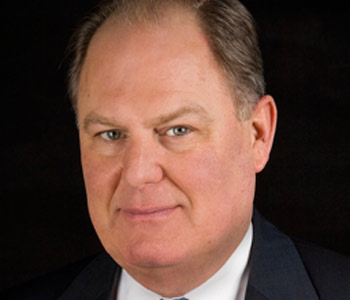Laurie Maguire
Helen of Troy: From Homer to Hollywood
Wiley-Blackwell
280 pages, 9 x 6 inches
ISBN 978 1405126359
This is a literary biography of Helen of Troy. It is not a historical life of a Bronze Age princess or a study of mythology; it is not an account of Troy or an exploration of the ancient world. It does not consider whether Helen of Troy had a historical existence or was a mythical figure. My subject is the literary afterlife of the woman we know as Helen of Troy, the beautiful Queen of Sparta whose abduction by the Trojan prince Paris led to a ten-year war and the downfall of King Priam’s Troy—and to twenty-eight centuries of poetry, drama, novels, opera, and film.
The German Romanticist Goethe wrote, “We do not get to know works of nature and art as end-products; we must grasp them as they develop if we are to gain some understanding of them.” He was talking about revisions of a single author’s work but his statement is equally true of revisions of one story across centuries and cultures. I wanted to get to know Helen’s story.
However, this is not the same as getting to know Helen herself. Indeed, one of the arguments of my book is that Helen is strangely absent (emotionally, physically) from the story she has initiated. Although she is the narrative motor, she is an absent center. She is the literary equivalent of the Mona Lisa’s smile: absence is her essence. This is a book about what is not there, what is not said, what defies representation, and what cannot be told.
In chronicling Helen’s story I have necessarily had to spread my net wide. The most recent works discussed are from the twenty-first century: a radio drama by Mark Haddon (the award-winning author of The Curious Incident of the Dog in the Night Time), an American cable TV series, Helen of Troy, poems by Carol Ann Duffy and Eva Salzman; the earliest texts are Greek (Homeric epic, Euripides’ plays). In between come Shakespeare, pre-Raphaelite poetry, the Victorian novel, Virginia Woolf, silent movie, opera and operetta, C. S. Lewis, Derek Walcott—almost everyone has written about Helen at some stage!

Helen’s beauty is 'excessive' or 'insufficient.' These binaries are attributed to beauty but they are also, as it happens, properties of narrative. Plenitude and lack are common to both, and the result is the same: desire. In life we call it longing; in narrative it is called suspense.
This book took me many years to write—longer than the Trojan War itself took. At Oxford University, where I teach, students study every period of English Literature from 800 CE to 2010. And every century of literature that I teach is full of references to Helen of Troy. Those are usually expressions of hate towards her. But what aroused my curiosity was the persistent narrative difficulty that authors have in dealing with the most beautiful woman in the world.
Part of this difficulty seems to be the problem of representing in language someone whose beauty is deemed beyond description. This problem of representation is constant in all Helen narratives and it becomes particularly acute in drama. Authors can simply abdicate narrative responsibility, saying “I can’t even begin to describe her.” But stage and film actresses have to represent Helen; drama is representation.
So I became interested in gaps and blanks. For some literary theorists, literature is a system of exclusion. It is about the relationship between what is present in the text and what is absent from it, and it comes to the reader to negotiate this relationship. The reader provides continuity and connection (at the most basic level: of character), coordinating viewpoints and filling in blanks. (This, in fact, is how all perception works: in night driving the brain connects remarkably little visual data into a road, a bend, a hill.)
From the very beginning, Helen’s story has been an attempt to fill in gaps. These gaps are both emotional and practical. Was she abducted or did she elope? What did she feel for her husband, Menelaus, at home in Sparta, or for her lover, Paris, in Troy? How did she manage what Rupert Brooke called (disparagingly) “the long connubial years” when she was finally recaptured and returned to Sparta? What did the most beautiful woman in the world look like?
Within a century of Homer’s Iliad, stories arose to fill in these gaps, dealing with everything from Helen’s lost child to attempts to kill Helen when she was recaptured. (It was not until the sixteenth century that a poet managed finally to kill Helen; in two Renaissance versions she commits suicide, devastated at the loss of her beauty in old age.)
Alongside attempts to fill in large narrative gaps in Helen’s story come localised attempts to suppress Helen’s presence linguistically. In The Women of Troy Euripides’ Menelaus arrives to fetch “the Spartan woman, once my wife—even to speak / Her name I find distasteful.” C. S. Lewis’s Menelaus thinks of his estranged wife as “the Woman” (in his short story, “After Ten Years”). In George Peele’s Renaissance poem The Tale of Troy (1589) Helen enters the poem only as a pronoun not a proper name: “She.” Helen, the cause of the Trojan war, is systematically linguistically suppressed from its literature.
The most surprising suppression of Helen comes on the DVD cover of Wolfgang Petersen’s film Troy (2004) where, at least in the UK edition, Diane Kruger’s name does not appear at all. This might make sense in terms of film narrative—Kruger is little involved in the plot—but it was the search for Helen of Troy / Diane Kruger that was publicized internationally, and Kruger does occupy prominent screen time.
So stories about Helen do two things simultaneously: they write her in and then they write her out!
No one can write about Helen of Troy without thinking about the meaning of beauty.
Consider the following statements about Helen’s beauty. Here is Guido delle Colonne writing in the thirteenth century: “Helen was famous for excessive loveliness.” Guido’s phrasing is interesting: Helen is not the most beautiful woman in the world (that would be a compliment: Helen as the absolute of womankind); she is a woman with too much beauty (a hint of a problem: that in this case surplus is deficiency). Here is the Renaissance writer Giovanni Petro Bellori, arguing that Helen did not have enough beauty: “Helen was not as beautiful as they pretended, for she was found to have defects and shortcomings.” Here is the New York Times film critic reacting to Diane Kruger’s portrayal of Helen in the Hollywood film Troy: “she isn’t sufficiently fabulous-looking to be convincing as the face that launched a thousand ships.”
Common to these statements is an economy of surplus and lack: Helen’s beauty is “excessive” or “insufficient.” These binaries are attributed to beauty but they are also, as it happens, properties of narrative. Plenitude and lack are common to both, and the result is the same: desire. In life we call it longing; in narrative it is called suspense.
In Shakespeare’s Antony and Cleopatra Enobarbus attempts to describe ancient Egypt’s most beautiful ruler, Cleopatra. Although he can describe everything around her in sumptuous and erotic detail, when it comes to Cleopatra herself he summarizes simply: “she makes hungry / Where most she satisfies.”
What is true of Cleopatra is true of Helen and is true of narrative itself: it makes hungry where most it satisfies. Narrative detail is the literary equivalent of the dermatological itch, where one scratch of inflamed skin is too many and one hundred is never enough. Any attempt at literary representation of beauty invites detail (was she blonde? tall? what color were her eyes?) and all details about Helen prove problematic, for reasons related to the binary sketched above. As Susan Stewart put it, in On Longing, “detail . . . does not tell us enough and yet it tells us too much.”
Thus beauty, like its linguistic proxy, detail, paradoxically creates the one thing it tries to forestall: the longing for more. Of all other desires—a good meal, a new car, a bigger house—the fulfillment of the desire coincides with the termination of longing. As Elaine Scarry argued, when the object is acquired or the dream realized, desire ends; beauty, however, renews the longing.
In this sense, the specific narrative problem of detail is a problem of closure. For in attempting to describe and to detail, narrative tries to pin down and to contain. Detail is really an attempt at closure. The history of Helen’s story is a series of attempts to close that story, a closure Helen and her narrative consistently elude and frustrate. Closure is something that beauty, not just Helen’s beauty, resists.

Narrative detail is the literary equivalent of the dermatological itch, where one scratch of inflamed skin is too many and one hundred is never enough.
What happens when a story is translated—literally, “carried across”—or updated to modern political and cultural conditions?
The rape of Helen was clearly topical in the 1590s when poems and plays about Helen (including several allusions by Shakespeare) abound. These literary retellings of Helen’s story coincide with a change in rape law: in 1597 a statute change made rape a crime against the woman rather than against the male “owner” of the woman (her husband or father).
But what happens when Helen changes ethnicity? (Derek Walcott gives us the first black Helen in his 1997 Caribbean Omeros.) What happens when Helen’s story gets rewritten to whitewash her? (Virginia Woolf’s Clarissa Dalloway is presented as a latter-day Helen, one who never succumbed to temptation.) What happens when the story foregrounds Helen’s motherhood? (A Victorian novel does this, A Daughter of the Gods, by the unknown female writer, Jane Stanley.) Or when Helen’s story becomes the subject of comedy and parody (as in Offenbach’s operetta La Belle Hélène) or a silent movie (Helen of Troy won an Oscar for its witty intertitles in the first year of the Oscars, 1928)?
Getting to know a story helps us get to know the period that told it.




We don't put paywalls. We don't distract you with ads. We don't sell your data.
Please help to keep this running!